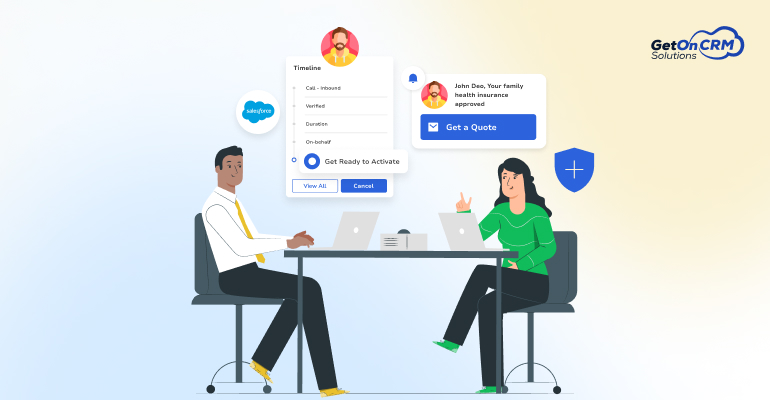Public sector organizations face unique challenges when providing services to citizens. From managing vast amounts of data to making sure resources are allocated efficiently, public sector solutions must be efficient, effective, and accessible for all people. This article will investigate how Salesforce CRM can help these organizations streamline their solutions and maximize efficiency.
Before we explore how Salesforce CRM can benefit public sector organizations, with us comprehend the current state of public sector solutions. Despite all efforts made by many organizations within this space, several challenges must still be overcome; these include:
Challenges With Current Systems
Many public sector organizations rely on antiquated systems that cannot meet modern society’s demands. These may be paper-based or use legacy software that requires frequent maintenance or upgrade; as a result, employees spend too much time performing manual tasks that could easily be automated with appropriate technology.
Inefficiencies in Current Systems
Beyond the challenges presented by outdated systems, current systems also contain inefficiencies that can hinder public sector organizations’ capacity to provide services to citizens. For instance, data may be siloed among different departments making it difficult to access or share; processes may be manual or require multiple steps leading to delays and errors; finally, organizations may struggle to keep up with increasing service demand leading to wait times and dissatisfied customers longer.
Importance of Improving Public Sector Solutions
Given these obstacles, there is an urgent need for public sector organizations to improve their solutions. Not only will this help employees work more efficiently, but it will also enhance citizens’ experiences with these services. Public sector organizations can streamline processes through appropriate technology implementation and deliver quicker, more accurate services at citizens’ fingertips.
Key Features of Salesforce CRM
Salesforce CRM features include lead and opportunity management, making it simpler to identify potential customers and convert them into paying clients.
Account and Contact Management: Salesforce CRM allows organizations to manage all aspects of their customer relationships, including contact information, preferences, and interaction history.
Marketing Automation with Salesforce CRM: Salesforce CRM provides organizations with comprehensive tools to create, manage and monitor marketing campaigns across multiple channels.
Customizable Reporting and Dashboards: Salesforce CRM boasts robust reporting and analytics capabilities, enabling organizations to monitor key metrics and gain valuable insights into customer behavior.
Mobile Access: Salesforce CRM is accessible from any device, making it convenient for public sector employees to view customer data and respond immediately to real-time inquiries.
What are the Benefits of Salesforce CRM For the Public Sector?
Public sector organizations can reap a host of advantages by utilizing Salesforce CRM’s features, such as:
Salesforce CRM’s unified view of customer data makes it simpler for public sector organizations to access and manage essential information. It can help eliminate silos, reduce errors, and guarantee employees have the information necessary to make informed decisions.
Increased Efficiency: Salesforce CRM automates manual tasks and streamlines processes to help public sector employees work more efficiently. That frees up time for more important tasks, like providing high-quality services to citizens.
Salesforce CRM Enhances Citizen Engagement: Public sector organizations can benefit from Salesforce CRM by offering faster, more accurate, and personalized services to citizens. It not only increases citizen satisfaction but also builds trust in government institutions.
Enhancing Collaboration: Salesforce CRM facilitates better collaboration among different departments within a public sector organization, allowing them to share information and work together more efficiently. It improves communication, reduces duplication of effort, and ultimately enhances citizens’ outcomes.
Top Practices for Implementing Salesforce CRM in the Public Sector
Are you thinking about introducing Salesforce CRM into your public sector organization? Here are a few best practices to consider:
Establish a Clear Vision
Before beginning Salesforce CRM implementation, you must visualize your goal. That includes identifying any pain points you want to address and the desired outcomes. Starting with an achievable vision ensures everyone in your organization is on board and working towards similar objectives.
Identify Key Stakeholders
Implementing Salesforce CRM requires a collaborative team effort, so it’s essential to identify key stakeholders early in the process. It includes determining which departments and individuals will be affected by the implementation and those responsible for maintaining the platform on an ongoing basis.
Implement a Comprehensive Plan
Implementing Salesforce CRM is an extensive task, so creating a comprehensive plan outlining all steps involved is essential. That should include specifying which features and functionality you will require and allocating resources necessary for the implementation and upkeep of the platform.
Invest in Employee Training and Support
You must invest in employee training and support to guarantee the success of your implementation. That includes providing comprehensive instruction on the platform’s features and functionality and ongoing assistance to help employees resolve issues or get the most out of it.
Focus on Data Quality
Salesforce CRM’s success depends on its data, so it’s essential to prioritize data quality from the beginning. That includes creating standards for data entry and processes for validation and cleaning data sets.
Customize for Your Needs
Salesforce CRM is highly customizable, meaning you can tailor the platform to fit the unique requirements of your public sector organization. It includes customizing fields, workflows, and reports to reflect tailored business processes.
Keep Security in Mind
When implementing Salesforce CRM in the public sector, it is essential to consider security. That involves setting up role-based access controls and taking measures to safeguard sensitive data.
Common Challenges When Implementing Salesforce CRM in the Public Sector
Implementing Salesforce CRM successfully in the public sector presents some unique challenges.
Salesforce CRM can offer many advantages to public sector organizations, but some potential drawbacks should be taken into consideration:
Resistance to Change
Implementing Salesforce CRM can be a major adjustment for employees, and there may be some resistance. To combat this resistance, it’s essential to communicate the platform’s advantages and offer comprehensive training and support so employees can successfully transition onto the new system.
Data Quality Issues
Data quality is fundamental for Salesforce CRM’s success, yet many public sector organizations struggle with data quality issues such as duplicate or outdated records. Establishing data validation and cleaning processes is essential to guarantee your records remain accurate and up-to-date.
Integration with Legacy Systems
Many public sector organizations possess legacy systems that may not be compatible with Salesforce CRM. Integration between Salesforce CRM and existing systems must occur to guarantee data sharing across platforms.
Conclusion
Streamlining public sector solutions is essential for maximizing efficiency and providing better services to citizens. Integrating Salesforce CRM and the expertise of Salesforce silver consulting partner GetOnCRM can greatly improve the effectiveness of public sector organizations by automating processes, improving data management, and enabling better collaboration among teams. With Salesforce CRM, public sector organizations can enhance their ability to meet the needs of their constituents and achieve their goals efficiently. With the support of GetOnCRM’s expertise, public sector organizations can customize their solutions to fit their unique needs and realize the full potential of Salesforce CRM. Public sector organizations can increase efficiency, reduce costs, and better serve their communities by implementing these solutions.
FAQs
What are the advantages of Salesforce CRM for public sector organizations?
Implementing Salesforce CRM in a public sector organization can provide organizations with increased efficiency, better citizen engagement, and enhanced department collaboration.
How Much Does Salesforce CRM Cost?
The price of Salesforce CRM depends on the plan and features you select. Public sector organizations may qualify for discounted pricing or special programs, so it’s worth exploring your options and speaking to Salesforce representatives for further details.
Can Salesforce CRM Be Utilized for Both Internal and External Stakeholders?
Yes, Salesforce CRM offers the capability of managing internal and external stakeholders such as employees, citizens, and other partners.
Can Salesforce CRM Be Customized for My Organization’s Specific Needs?
Salesforce CRM offers high levels of customization to suit the unique requirements of public sector organizations. That includes customizing fields, workflows, and reports to reflect how they operate in reality.















